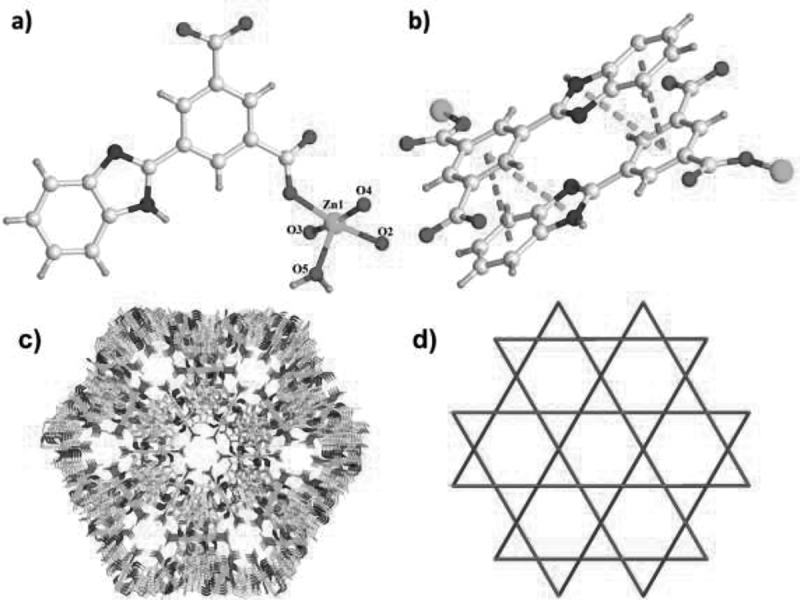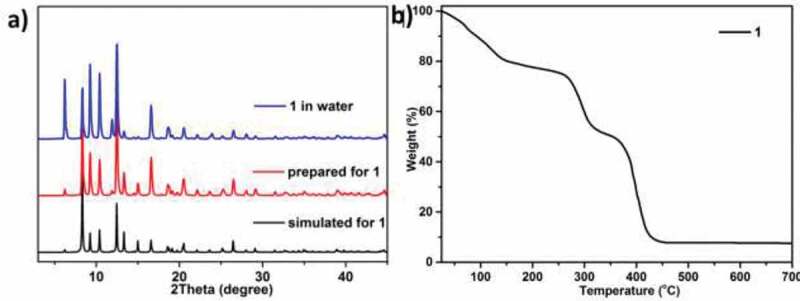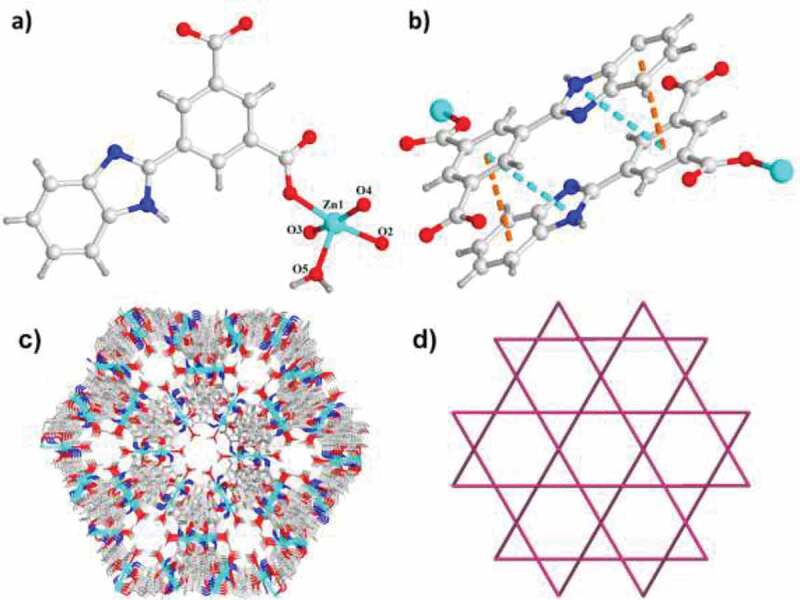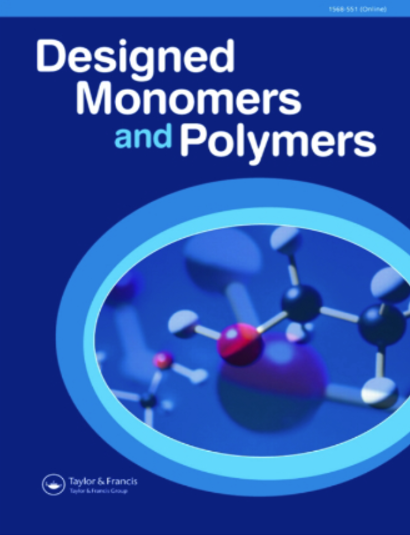A luminescent Zn-MOF exhibiting high water stability: selective detection of Cr(VI) ion and treatment activity on sepsis.
IF 2.3
4区 化学
Q3 POLYMER SCIENCE
Designed Monomers and Polymers
Pub Date : 2021-07-27
eCollection Date: 2021-01-01
DOI:10.1080/15685551.2021.1953239
引用次数: 4
Abstract
ABSTRACT A fresh metal-organic framework (MOF) based on the Zn ions as the metal ions has been prepared via the solvothermal method, and its chemical formula is [Zn(byia)(DMF)]·1.5DMF·7H2O (1, byia = 5-(benzimidazol-2-yl) isophthalic acid). It is worth noting that the compound 1 has excellent water stability (which can be maintained in the water for at least a month). Most fascinating, in water, the compound 1 exhibits the strong blue luminescence, which can only be selectively quenched via the contaminant of the Cr2O7 2– ion. The selective luminescence quenching with low limits of detection and high values of K sv proved its better sensing property, which can be compared with the contemporary materials. To development new strategy for the sepsis treatment, the biological activity and mechanism of the compound was explored. Firstly, the ELIA detection was performed in this experiment to assess the inhibition of compound against inflammatory factor storm during sepsis. Then, the inflammatory response in the immune cells was assessed by real time RT-PCR.



具有高水稳定性的发光Zn-MOF:对Cr(VI)离子的选择性检测和对败血症的治疗活性。
采用溶剂热法制备了以Zn离子为金属离子的新型金属有机骨架(MOF),其化学式为[Zn(byia)(DMF)]·1.5DMF·7H2O (1, byia = 5-(苯并咪唑-2-基)间苯二甲酸)。值得注意的是,化合物1具有优异的水稳定性(可在水中保持至少一个月)。最令人着迷的是,在水中,化合物1表现出强烈的蓝色发光,这种发光只能通过Cr2O7 -离子的污染选择性猝灭。低检测限和高ksv值的选择性发光猝灭证明了其较好的传感性能,可与当代材料相媲美。为了开发新的脓毒症治疗策略,对该化合物的生物活性及其作用机制进行了探讨。首先,本实验通过ELIA检测来评估化合物对脓毒症时炎性因子风暴的抑制作用。然后,通过实时RT-PCR评估免疫细胞的炎症反应。
本文章由计算机程序翻译,如有差异,请以英文原文为准。
求助全文
约1分钟内获得全文
求助全文
来源期刊

Designed Monomers and Polymers
化学-高分子科学
CiteScore
3.30
自引率
0.00%
发文量
28
审稿时长
2.1 months
期刊介绍:
Designed Monomers and Polymers ( DMP) publishes prompt peer-reviewed papers and short topical reviews on all areas of macromolecular design and applications. Emphasis is placed on the preparations of new monomers, including characterization and applications. Experiments should be presented in sufficient detail (including specific observations, precautionary notes, use of new materials, techniques, and their possible problems) that they could be reproduced by any researcher wishing to repeat the work.
The journal also includes macromolecular design of polymeric materials (such as polymeric biomaterials, biomedical polymers, etc.) with medical applications.
DMP provides an interface between organic and polymer chemistries and aims to bridge the gap between monomer synthesis and the design of new polymers. Submssions are invited in the areas including, but not limited to:
-macromolecular science, initiators, macroinitiators for macromolecular design
-kinetics, mechanism and modelling aspects of polymerization
-new methods of synthesis of known monomers
-new monomers (must show evidence for polymerization, e.g. polycondensation, sequential combination, oxidative coupling, radiation, plasma polymerization)
-functional prepolymers of various architectures such as hyperbranched polymers, telechelic polymers, macromonomers, or dendrimers
-new polymeric materials with biomedical applications
 求助内容:
求助内容: 应助结果提醒方式:
应助结果提醒方式:


